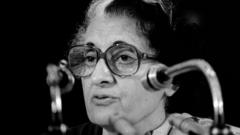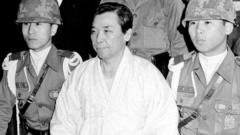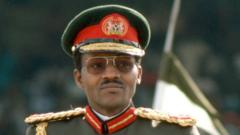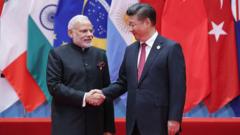This article revisits the Emergency declared by Prime Minister Indira Gandhi in 1975, outlining its devastating effects on civil rights, political dissent, and the Indian democracy at large, where executive power overshadowed constitutional safeguards for nearly two years.
The Emergency in India: A Dark Chapter in Democratic History

The Emergency in India: A Dark Chapter in Democratic History
Exploring the chilling implications of Indira Gandhi's Emergency and its impact on civil liberties and governance.
At midnight on June 25, 1975, the foundations of India's fledgling democracy trembled as Prime Minister Indira Gandhi proclaimed a nationwide Emergency. The announcement marked the beginning of a tumultuous 21-month period wherein civil liberties were obliterated, opposition voices silenced, and the press effectively muzzled. Technically, India remained a democracy, but the reality was far removed from democratic ideals.
The catalyst for this drastic measure was a crucial judgement from the Allahabad High Court, which declared Gandhi's 1971 electoral victory invalid due to malpractice, placing her political future in jeopardy. Faced with escalating protests spearheaded by prominent socialist leader Jayaprakash Narayan, Gandhi invoked Article 352, denoting a state of internal emergency citing national instability.
Historian Srinath Raghavan has described the Emergency as not merely a suspension of democracy, but an alarming enhancement of executive authority devoid of judicial oversight. Over 110,000 arrests were documented, encompassing prominent political figures such as Morarji Desai and LK Advani, and all opposition groups faced bans. The judicial system, stripped of its independence, offered no refuge. In Uttar Pradesh, an overwhelming number of detentions occurred without a single challenge from the courts, highlighting the government’s unchecked power.
During this chilling period, an ambitious family planning initiative saw the sterilization of around 11 million individuals, many of whom were coerced into compliance. This campaign was widely believed to have been driven by Sanjay Gandhi, Indira's unelected son, and it disproportionately affected the impoverished, often forcing them into stark choices driven by economic survival.
Simultaneously, a vast urban cleanup project's demolition of slums rendered 700,000 people homeless, conveying a gentrification approach that critics labeled as social cleansing. One tragic event in Delhi's Turkman Gate led to police violence against protesters, exposing an authoritarian grip on civil order.
The Press endured unprecedented censorship, with governmental control silencing dissent and devoiding journalists of the freedom to report. Notable newspapers like The Indian Express and The Statesman opted for blank columns as a form of protest against suppression. The situation reached a peak where foreign journalists were expelled for contesting censorship, a stark indication of the regime's uncompromising stance against dissenting voices.
Amidst these alarming developments, many perceived the Emergency as an era of enforced order. Trains ran on schedule, and industrial returns were pivoted upward, leading some, like industrialist J.R.D Tata, to commend the regime for its pragmatic governance. Nevertheless, the socio-political cost proved steep, as the emblem of authority overshadowed civil liberties.
The Emergency formally concluded in March 1977, giving way to a new government coalition which sought to reverse many of the restrictions imposed. Yet, the repercussions of this dark epoch linger in the public consciousness, a cautionary tale against the fragility inherent in democratic frameworks.
Today, as historians highlight the plummet of India's democracy into authoritarian waters, the lessons of the Emergency remain poignant. It serves as a call to vigilance against power consolidation within democracies, reminding us all that the erosion of liberty can occur under the guise of order and urgency.




















